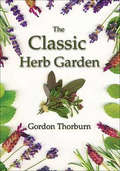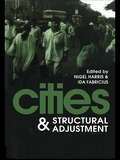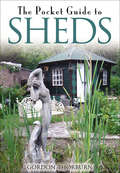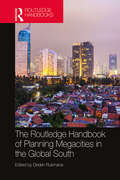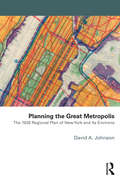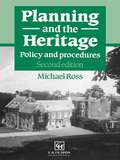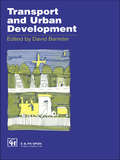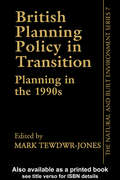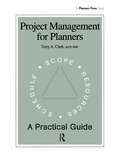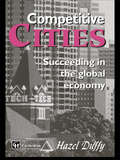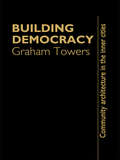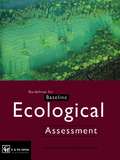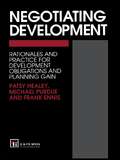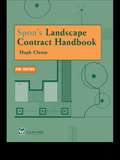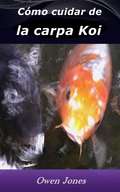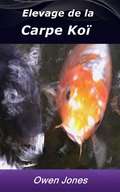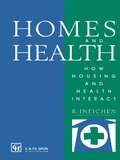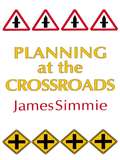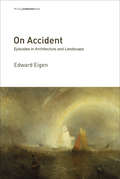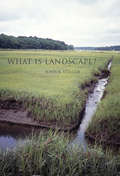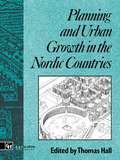- Table View
- List View
The Classic Herb Garden
by Gordon ThorburnA helpful guidebook to growing herbs successfully and safely, with photos included. Herbs have been used since ancient times both to flavor food and as natural medicines. In this easy-access guide, gardener Gordon Thorburn reveals different types of herb gardens to suit your needs—from those that don’t require a lot of attention (mint and rosemary don’t need much watering, but basil and the beautiful Vietnamese coriander are very demanding), to classic herb gardens, culinary options, and medicinal herb gardens. Whether you suffer from migraines, insomnia, coughs and colds, or fatigue, there are herbs which can treat you without side effects. But some herbs can prove fatal—so you can also discover which herbs are safe to use as herbal teas, but not as salad leaves, in this guide to creating the perfect herb garden for your needs. Each herb is listed with growing instructions and its culinary and medicinal uses, plus the color of its flowers and any must-know information, from health warnings to nature-friendly herbs which attract butterflies and bees to help pollinate your garden.
Cities And Structural Adjustment
by Nigel Harris Ida FabriciusThis work addresses the challenge faced in the management of major cities throughout the world as they adjust to economic reform and, in particular, to becoming more open to the processes operating in worldwide markets. Such processes have already had some dramatic effects on large cities in developed and developing countries - the rapid decline in manufacturing in older industrial cities and the emergence of the servicing city are but two of the more striking outcomes. Based on substantial case studies of cities in the developed and the developing world - Sheffield, Barcelona, Lille, Mexico City, Monterrey, Santiago de Chile, Bogota, Kingston Jamaica and Johannesburg - themes are drawn out, extending from structural economic change to policy reactions, new city initiatives, management, planning and finance.
Best Development Practices: Doing the Right Thing and Making Money at the Same Time
by Reid EwingThe author draws upon case examples of some of today's most acclaimed developments in this book, and recommends best practice guidelines to help developers create vibrant, livable communities-and still make money. For years, Florida's planners and developers have had to deal with some of the most difficult growth management problems. Now planners and developers across the nation can benefit from the valuable lessons Florida offers on combating urban sprawl. Ewing first searched the state for the best contemporary developments, then distilled their lessons into guidelines for directing new development and assessing the quality of existing development. The 43 practices outlined in this exciting book cover four areas of development-land use, transportation, the environment, and housing. They apply to a broad range of development projects, including small planned communities, residential subdivisions, and commercial centers. The book's recommendations are based upon the experiences of successful developers and supported by empirical research. The proof lies in the compelling real-world examples Ewing highlights throughout the text. Illustrated with dozens of photographs and written in a lively style, this book is must reading for all those seeking better ways to plan and design communities. Developers will find proven, feasible land development regulations and benchmarks against which to evaluate development proposals.
Familias sin plástico: Pequeño manual de ecología cotidiana para cuidar el planeta
by Marion de La PorteEl libro para hacerte la vida sin plástico más fácil. Esta guía ilustrada llena de pautas, consejos y trucos nos ayuda a poner en práctica el zero waste y ofrece alternativas sencillas para una vida familiar saludable y respetuosa con el medioambiente. ¿Cómo? De una forma simple y progresiva. ¿Dónde? En casa, en el trabajo, en la escuela, haciendo la compra, durante las vacaciones y en los momentos de ocio y celebraciones. ¿Cuándo? En el día a día, sin culpas ni agobios. En este libro encontrarás, además, un capítulo dedicado especialmente al embarazo, el parto y los primeros años de crianza. Porque la herencia positiva de nuestra generación de padres es la de enseñar a cuidar nuestro planeta. ¡Unámonos a la revolución sostenible!
The Pocket Guide to Sheds
by Gordon ThorburnAs the globe warms, everything runs out and people become the willing slaves of small electronic machines, we have our response: the Golden Age of Sheds. We can look out from our sheds and see those unfortunates, the slaves in question, the ones who would rather be stripped naked and whipped through the market square than be separated, for one nanosecond, from their portable telephones and i-thingies, and we can smile.This book is where the smilers are. Here, you can find the man who reinvigorates the entente cordiale in wood, the woman who boils kettles, the woman who says 'I'm Nicola from In the Shed', the man who says 'What's yours?', the dooket that Jock built, the blockhouse that Noah built, a neoclassical stately home, and all manner of things musical, yogic, animalcular, roguish, ockerish and cloudy. Whether we see our shed as a place of work, a place of fun, a welcome refuge from normality, a shaded pool of tranquility, a realization of a secret yearning, a place to pot up the geraniums, or a little bit of all those things combined, we Sheddies, tribesfolk of the mighty Sheddici, hold one truth to be undeniable. We have our sheds, and the others haven't.
The Routledge Handbook of Planning Megacities in the Global South
by Deden RukmanaCities are now home to 55% of the world’s population, and that number is rising. Urban populations across the world will continue to grow, including in megacities with populations over ten million. In 2016 there were 31 megacities globally, according to the United Nations’ World Cities Report, with 24 of those cities located in the Global South. That number is expected to rise to 41 by 2030, with all ten new megacities in the Global South where the processes of urbanization are intrinsically distinct from those in the Global North. The Routledge Handbook of Planning Megacities in the Global South provides rigorous comparative analyses, discussing the challenges, processes, best practices, and initiatives of urbanization in Middle America, South America, the Middle East, Africa, South Asia, East Asia, and Southeast Asia. This book is indispensable reading for students and scholars of urban planning, and its significance as a resource will only continue to grow as urbanization reshapes the global population.
Planning the Great Metropolis: The 1929 regional plan of New York and its environs (Planning, History and Environment Series)
by David A. JohnsonAs the Regional Plan Association embarks on a Fourth Regional Plan, there can be no better time for a paperback edition of David Johnson’s critically acclaimed assessment of the 1929 Regional Plan of New York and Its Environs. As he says in his preface to this edition, the questions faced by the regional planners of today are little changed from those their predecessors faced in the 1920s. Derided by some, accused by others of being the root cause of New York City’s relative economic and physical decline, the 1929 Plan was in reality an important source of ideas for many projects built during the New Deal era of the 1930s. In his detailed examination of the Plan, Johnson traces its origins to Progressive era and Daniel Burnham’s 1909 Plan of Chicago. He describes the making of the Plan under the direction of Scotsman Thomas Adams, its reception in the New York Region, and its partial realization. The story he tells has important lessons for planners, decision-makers and citizens facing an increasingly urban future where the physical plan approach may again have a critical role to play.
Planning and the Heritage: Policy and procedures
by Michael RossThis is a clear guide to heritage legislation in the UK. It is set out in plain, non-legal language and will guide the planner, developer, architect or conservationist through the legislation, explaining the policy and procedures which govern the protection of historic buildings as well as providing clear explanations of the issues involved, including listing, planning appeals and grants.
Transport and Urban Development
by David BanisterThe editor and his contributors take an international perspective on the links between land use, development and transport and present the latest thinking, the theory and practice of these links. Authors from six countries - all experts in this area - have been commissioned to write chapters on the theoretical debates and more practical issues, via the use of detailed case studies.
British Planning Policy: Planning In The Major Years
by Mark Tewdwr-JonesFirst Published in 1995. Routledge is an imprint of Taylor & Francis, an informa company.
Project Management for Planners: A Practical Guide
by Terry A. ClarkThis book provides practicing planners with the knowledge of how to bring real world planning projects to a successful and efficient. It applies the five process groups of project management as identified in Project Management Institute's PMBOK® Guide and put them in the language of planners.
Competitive Cities: Succeeding in the Global Economy
by Hazel DuffyCompetitive Citites is an assessment of the way in which `partnership', a word much used by politicians, has helped to shape the economic futures of four cities on both sides of the Atlantic - Atlanta, Toronto, Birmingham and Rotterdam.
Building Democracy
by Graham TowersBuilding Democracy is a major contribution to the growing public debate about the revival of community values in the face of the self-evident short-comings of the free market, specifically in terms of community architecture. Providing a historical context and an authoritative account of a movement that is proving surprisingly extensive and enduring, the book also examines the relevance of the approach to today's social and environmental problems, particularly in the inner cities. Community architecture was promoted in the early 1980s as the achievement of a handful of pioneering architects finding new ways of working with groups of ordinary people, to help them develop their own homes and community facilities. Building Democracy records the achievements of this movement and analyzes its contribution in addressing the problems of inner cities. Beginning with the origins of the urban question in the industrialization of the 19th century, the book goes on to look at the large-scale urban redevelopment of the 1960s - the latest and most concerted attempt to remodel Victorian cities, and on to community action, from which grew new approaches to design, development and construction. This book is of practical value to planners, architects, surveyors and landscape designers concerned with socially relevant design, as students or professionals. It will also be of interest to many people in the voluntary sector and in local government.
Guidelines for Baseline Ecological Assessment
by The Institute of Environmental AssessmentThese best practice guidelines present the type and level of detail required for describing and evaluating the ecological baseline of an environmental assessment. These assessments are vital in determining whether or not there are issues of ecological importance for a site or proposed development and are an essential component of the environmental impact assessment process.
Negotiating Development: Rationales and practice for development obligationsand planning gain
by Frank Ennis F. Ennis P. Healey Prof Patsy Healey M. PurduePlanning gain is the legal process by which property development is linked to social provisions. This book examines the rationale for planning gain and development obligations and reviews the practice of development negotiation through a wide range of case histories.
Spon's Landscape Contract Handbook: A guide to good practice and procedures in the management of lump sum landscape contracts
by Hugh Clamp H. ClampThis indispensable manual for landscape work covers the documentation and management of landscape contracts. It is written for all those involved in the landscape industry.
Guia de Segurança Residencial: Como Proteger Sua Casa & Família com Sistemas de Segurança, Câmeras, Empresas, Alarmes & Automação
by Hiddenstuff EntertainmentVocê está procurando proteger sua casa, seus pertences e sua família? Se você respondeu sim a qualquer uma destas perguntas, este guia é para você. Os recentes avanços tecnológicos tornaram a segurança residencial mais acessível, mais eficaz e mais barata do que nunca. Esqueça ter de pagar aquelas empresas de segurança residencial caras para proteger sua casa. Você pode fazer isso sozinho, por apenas algumas centenas de reais. Economize dinheiro e garanta que seus bens e sua família estejam seguros e protegidos. Nunca seja pego de surpresa por indivíduos que procuram prejudicar seus entes queridos e roubar suas posses. Este guia ensinará a você o seguinte: - Tipos de segurança residencial. - Como configurar. - Como proteger sua família. - Como economizar milhares de reais, fazendo você mesmo. -> Vá até o topo da página e clique em adicionar ao carrinho para comprar instantaneamente Isenção de responsabilidade Este autor e/ou o(s) proprietário(s) dos direitos não fazem reivindicações, promessas ou garantias com relação à precisão, integridade ou adequação do conteúdo deste livro, e expressamente se isentam da responsabilidade por erros e omissões no conteúdo deste. Este produto é apenas para uso de referência. Por favor, consulte um profissional antes de agir baseado em qualquer um dos conteúdos encontrados aqui.
Cómo cuidar de la carpa Koi (Cómo hacer... #1)
by Owen Jones¡Hola! Gracias por comprar este libro electrónico llamado 'Cómo cuidar de la Carpa Koi'. Espero que la información le resulte útil y provechosa. El contenido de este libro electrónico sobre estanques de jardín Koi y otros temas relacionados está agrupado en dieciocho capítulos, que le ayudarán a elegir un sitio para su estanque de carpas Koi, cómo montarlo y mantenerlo durante todo el año. También aprenderá a cuidar de sus valiosos peces durante las diferentes estaciones del año e incluso en condiciones adversas. Le puede ayudar a iniciar una nueva profesión o como mínimo le ayudará a ahorrar cien veces más en asesoramiento profesional. Como incentivo adicional, le doy permiso para usar el contenido en su propio sitio web o en sus blogs y sus boletines, aunque es mejor si lo vuelve a escribir con sus propias palabras primero. También puede dividir el libro y revender los artículos. De hecho, el único derecho del que no puede disfrutar es el de revender o regalar el libro tal como se le entregó. Si tiene algún comentario, por favor, envíelo a la compañía donde compró este libro o envíelo a owen@amiabledragon.com Puede encontrar más libros como este donde lo compró. Gracias de nuevo por comprar este libro electrónico, Atentamente, Owen Jones.
Elevage de la Carpe Koï (Comment faire... #1)
by Owen JonesElevage de la Carpe Koï Le contenu de ce livre audio sur les étangs domestiques de Koïs et les sujets connexes est organisé en dix-huit chapitres, qui vous aideront à choisir un site pour votre étang de carpes Koïs, à l'aménager et à l'entretenir toute l'année et à prendre soin de vos précieux poissons au cours des différentes saisons et même dans des conditions météorologiques particulièrement défavorables. Il peut même vous aider à vous lancer dans une nouvelle carrière. Le moins que vous puissiez faire est d'économiser des centaines de dollars sur les conseils d'un professionnel.
Homes and Health: How Housing and Health Interact
by Bernard IneichenThis book links where people live with their health. The author reviews how housing has influenced health throughout the past hundred and fifty years, discusses in detail current issues concerning housing and health and describes attempts at housing particular groups whose health is at risk.
Planning At The Crossroads
by James SimmieThrough a detailed analysis of studies of the effects of planning, comparing low levels of urban containment in California with much higher levels in the UK. Some comparative insights are also drawn from the (pre-conflict) Yugoslavian planning system. The analysis shows that many of the serious criticisms of planning are valid and leads to the conclusion that some sacred cows - notably "green belts" - should be abandoned. This distinctive text is of use to students, researchers and professionals in planning, geography and urban studies.
On Accident: Episodes in Architecture and Landscape (Writing Architecture)
by Edward EigenEngaging essays that roam across uncertain territory, in search of sunken forests, unclassifiable islands, inflammable skies, plagiarized tabernacles, and other phenomena missing from architectural history.This collection by “architectural history's most beguiling essayist” (as Reinhold Martin calls the author in the book's foreword) illuminates the unfamiliar, the arcane, the obscure—phenomena largely missing from architectural and landscape history. These essays by Edward Eigen do not walk in a straight line, but roam across uncertain territory, discovering sunken forests, unclassifiable islands, inflammable skies, unvisited shores, plagiarized tabernacles. Taken together, these texts offer a group portrait of how certain things fall apart.We read about the statistical investigation of lightning strikes in France by the author-astronomer Camille Flammarion, which leads Eigen to reflect also on Foucault, Hamlet, and the role of the anecdote in architectural history. We learn about, among other things, Olmsted's role in transforming landscape gardening into landscape architecture; the connections among hedging, hedge funds, the High Line, and GPS bandwidth; timber-frame roofs and (spider) web-based learning; the archives of the Houses of Parliament through flood and fire; and what the 1898 disappearance and reappearance of the Trenton, New Jersey architect William W. Slack might tell us about the conflict between “the migratory impulse” and “love of home.” Eigen compares his essays to the “gathering up of seeds that fell by the wayside.” The seedlings that result create in the reader's imagination a dazzling display of the particular, the contingent, the incidental, and the singular, all in search of a narrative.
What Is Landscape?
by John R. StilgoeA lexicon and guide for discovering the essence of landscape.“Mr. Stilgoe does not ask that we take his book outdoors with us; he believes that reading and experiencing landscapes are activities that should be kept separate. But, as I learned in his book, the hollow storage area in a car driver's door was once a holster, the 'secure nesting place of a pistol.' I recommend you stow your copy there.”—The Wall Street JournalLandscape, John Stilgoe tells us, is a noun. From the old Frisian language (once spoken in coastal parts of the Netherlands and Germany), it meant shoveled land: landschop. Sixteenth-century Englishmen misheard or mispronounced this as landskep, which became landskip, then landscape, designating the surface of the earth shaped for human habitation. In What Is Landscape? Stilgoe maps the discovery of landscape by putting words to things, zeroing in on landscape's essence but also leading sideways expeditions through such sources as children's picture books, folklore, deeds, antique terminology, out-of-print dictionaries, and conversations with locals. (“What is that?” “Well, it's not really a slough, not really, it's a bayou...”) He offers a highly original, cogent, compact, gracefully written narrative lexicon of landscape as word, concept, and path to discoveries.What Is Landscape? is an invitation to walk, to notice, to ask: to see a sandcastle with a pinwheel at the beach and think of Dutch windmills—icons of triumph, markers of territory won from the sea; to walk in the woods and be amused by the Elizabethans' misuse of the Latin silvaticus (people of the woods) to coin the word savages; to see in a suburban front lawn a representation of the meadow of a medieval freehold.Discovering landscape is good exercise for body and for mind. This book is an essential guide and companion to that exercise—to understanding, literally and figuratively, what landscape is.
Planning and Urban Growth in Nordic Countries (Planning, History and Environment Series)
by Thomas HallPlanning and Urban Growth in Nordic Countries examines urban development and planning in Denmark, Finland, Norway and Sweden. Emphasis is on the period from the mid-nineteenth century to the present day, and the authors of each 'country-study' look at their own national developments against the background of those in other Nordic countries well as the rest of Europe and the USA.
Environmental and Health Impact Assessment of Development Projects: A handbook for practitioners
by The World Health OrganizationThis handbook for practitioners in environmental and public health, environmental management, toxicology and ecotoxicology has been prepared by an international group of experts from both developing and developed countries and covers a wide range of topics in both environmental impact assessment and environmental health impact assessment.
